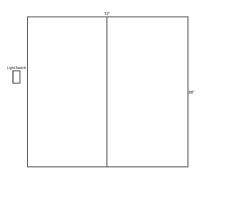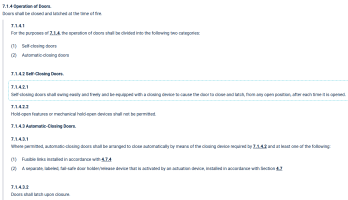Sifu
SAWHORSE
- Joined
- Sep 3, 2011
- Messages
- 3,421
I have a proposal to replace a single leaf 1-hr fire door assembly with a 1-hr double leaf door. My first reaction is to provide the testing and labeling requirements per 2018 IBC 716.2.1.1, as an assembly. The spec for the door replacement indicates separate components for the frame, door, hinges, and hardware. Each of the components is listed as either "fire rated" or "60-min.".
Researching the individual components it looks like they are taking a 1-hr metal frame, inserting a pair of 1-hr solid oak doors with 1-hr vision panels. Smoke seals, sweeps and closers (but only 1), and 2 manual flushbolts (for installation on a metal door) are also listed. Not sure (yet) where in the building this is located, what the occupant load it serves is, or use of the spaces, but it is a church, so fair bet it has an A component to it. There is a line item for 3 "60-min. fire labels". I'm not sure if any of this works or not. Is it acceptable if each component is labeled? No astragal or coordinator is listed, so I am thinking this would need to be tested as an assembly, but I am a little stumped by this. I don't think the manual flush bolts would be permitted but I don't have all the information yet, same for the hardware.
Researching the individual components it looks like they are taking a 1-hr metal frame, inserting a pair of 1-hr solid oak doors with 1-hr vision panels. Smoke seals, sweeps and closers (but only 1), and 2 manual flushbolts (for installation on a metal door) are also listed. Not sure (yet) where in the building this is located, what the occupant load it serves is, or use of the spaces, but it is a church, so fair bet it has an A component to it. There is a line item for 3 "60-min. fire labels". I'm not sure if any of this works or not. Is it acceptable if each component is labeled? No astragal or coordinator is listed, so I am thinking this would need to be tested as an assembly, but I am a little stumped by this. I don't think the manual flush bolts would be permitted but I don't have all the information yet, same for the hardware.


